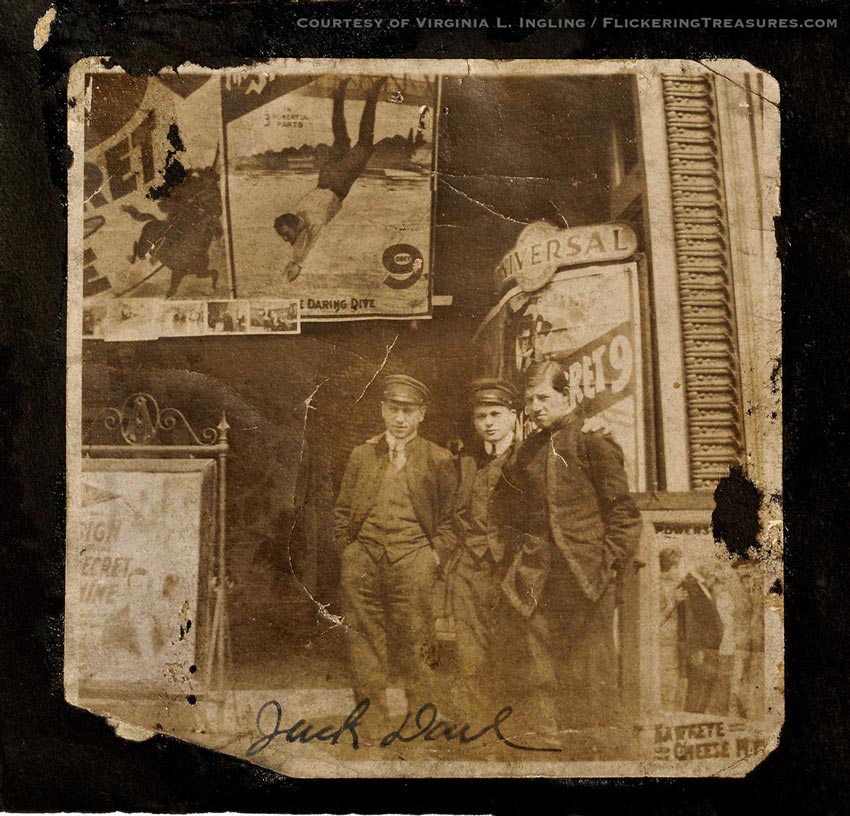Mystery Nickelodeon
Here’s an intriguing photo I would have loved to include in Flickering Treasures, but its location remains uncertain. Ironically, even the featured film is a mystery. We can pinpoint the photo’s time period from Hawkeye — The Cheese Mystery, which was released on March 16, 1914. The other silent film short, Sign of the Secret 9, is also from early 1914.

This photo comes from Virginia L. Ingling, whose poignant story of her father, a third-generation projectionist who worked at the Playhouse, is in the book. Her grandfather, Jack Hawkins, Sr., is pictured at right. We also know the identity of the young man at left, Meyer “Mike” Leventhal, who went on to a long career as a leader in Maryland’s movie industry.
But which theater might this be? Theater historian Robert K. Headley profiled Leventhal in a Jan. 4, 1970 article in the News-American, where this photo also appeared. Leventhal claimed it was taken at the Grand, at 400 E. Baltimore Street. Leventhal went to work for Marion S. Pearce and Philip J. Scheck at the Grand in 1909 as an usher, and advanced to projectionist by 1915. However, the architectural details in this photo don’t look like the Grand, which is vacant but still standing with most of its original exterior intact. Recently, Headley came across a January 11, 1914 ad for The Sign of the Secret 9, playing at the Comedy Theatre, which was on the same block as the Grand, at 412 E. Baltimore Street.
Look closely at left, where an “A” can be seen at the top of the movie sign board. Could these three be standing in front of the Amusea, another Pearce and Scheck nickelodeon dating back to 1907? If The Sign of the Secret 9 was playing at the theater next door in January, perhaps the Amusea picked it up a few months later, after Hawkeye – The Cheese Mystery was released.
The Amusea became the Clover, but Baltimoreans know 414 E. Baltimore Street, which also survives, as Blaze Starr’s 2 O’ Clock Club. This building has decorative trim that could be compatible with the fancy architectural edging seen in the photo. The curved entry arch is gone, but the Grand, Comedy and Amusea have all had numerous makeovers at the street level. These days, nightclub bouncers hover around the entrance where these uniformed fellows may have once stood. What would Meyer Leventhal and Jack Hawkins Sr. think of the tawdry clubs that line The Block today?